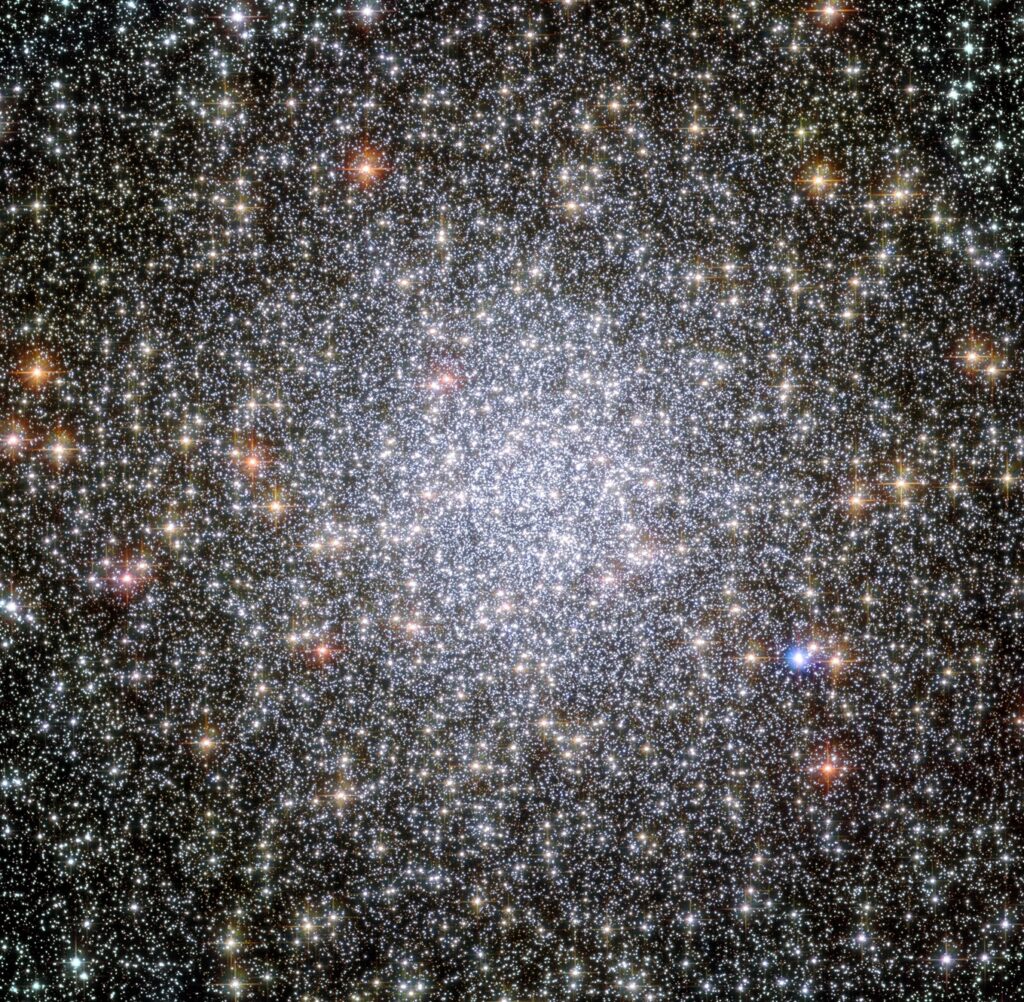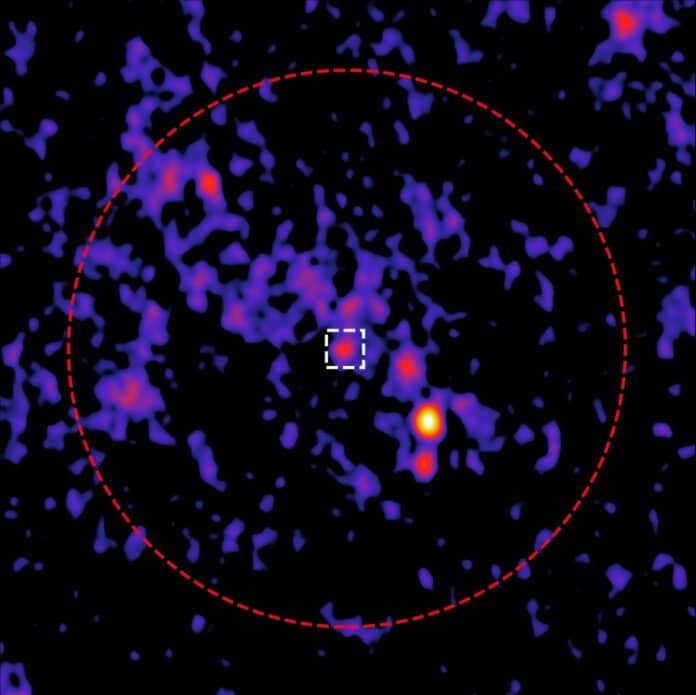Astronomers from around the world, led by the Curtin University node of the International Centre for Radio Astronomy Research (ICRAR) in Western Australia, have generated the most sensitive radio image ever of a globular cluster—an ancient, densely-packed ball of stars. This image is of 47 Tucanae, the second brightest globular cluster in the night sky, revealing over a million stars and a remarkably bright and dense core.
The scientists also identified a previously unknown radio signal from the cluster’s center.
Astronomer Dr Arash Bahramian, from ICRAR’s Curtin University, said, “The ultra-sensitive image was created from more than 450 hours of observations on CSIRO’s Australia Telescope Compact Array (ATCA), on Gomeroi Country.”
“It is the deepest, most sensitive radio image ever compiled by any Australian radio telescope. 47 Tucanae can be seen with the naked eye and was first cataloged in the 1700s.”
“But, imaging it in such great detail allowed astronomers to discover an incredibly faint radio signal at the cluster’s center that had not been detected before.”
Lead author Dr Alessandro Paduano, from ICRAR’s Curtin University node, said, “The detection of the signal was an exciting discovery and could be attributed to one of two possibilities.”
“The first is that 47 Tucanae could contain a black hole with a mass somewhere between the supermassive black holes found in the centers of galaxies and the stellar black holes created by collapsed stars.”
“While intermediate-mass black holes are thought to exist in globular clusters, there hasn’t been a clear detection of one yet.”
“If this signal turns out to be a black hole, it would be a highly significant discovery and the first ever radio detection of one inside a cluster.”

The second potential origin of the detected radio signal is a pulsar, a rapidly rotating neutron star emitting radio waves. The discovery of a pulsar near a cluster center is scientifically intriguing. It opens up the possibility of using the pulsar to search for a central black hole that has not yet been detected.
The compassionate image achieved previews the capabilities researchers can anticipate from the Square Kilometre Array (SKA) radio telescopes, presently under construction in Australia and South Africa by the SKA Observatory (SKAO). Upon completion, these telescopes will rank as the two largest radio telescope arrays globally, revolutionizing our comprehension of the Universe and addressing some of the most profound scientific inquiries.
Dr. Bahramian emphasized that researchers are consistently exploring new and inventive methods to maximize the potential of the radio telescopes at their disposal.
Journal Reference:
- Alessandro Paduano, Arash Bahramian et al. Ultradeep ATCA Imaging of 47 Tucanae Reveals a Central Compact Radio Source. The Astrophysical Journal. DOI 10.3847/1538-4357/ad0e68
